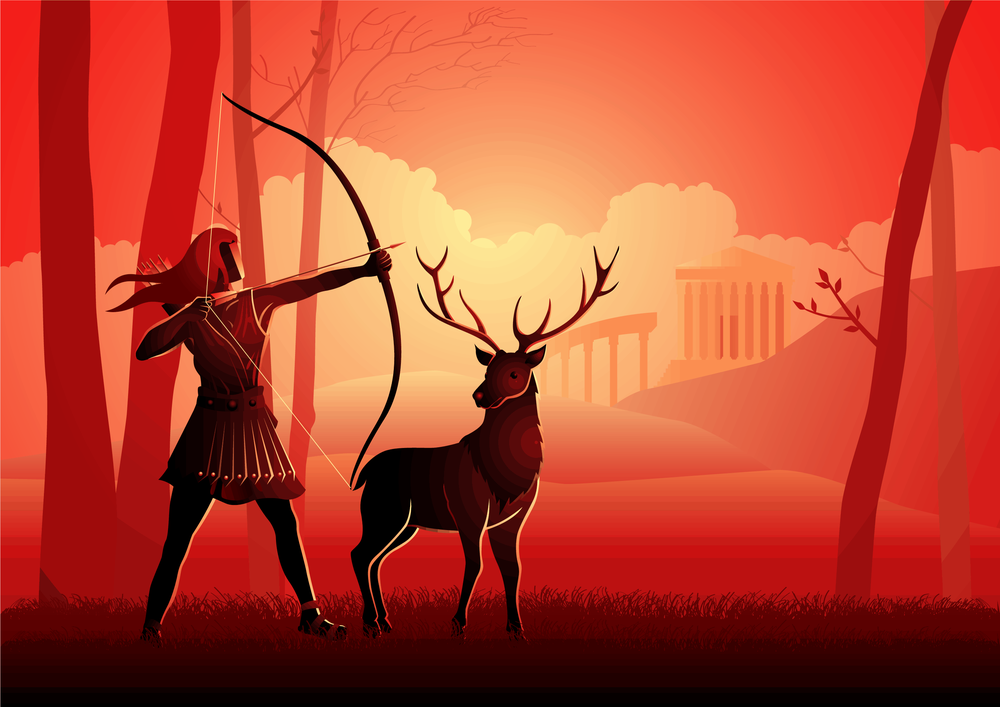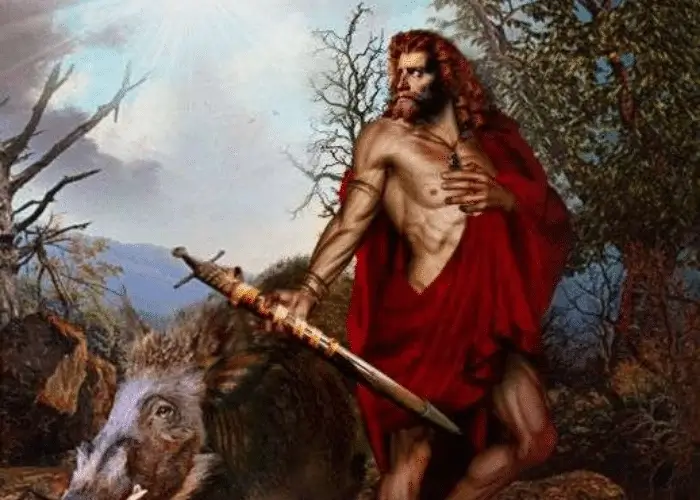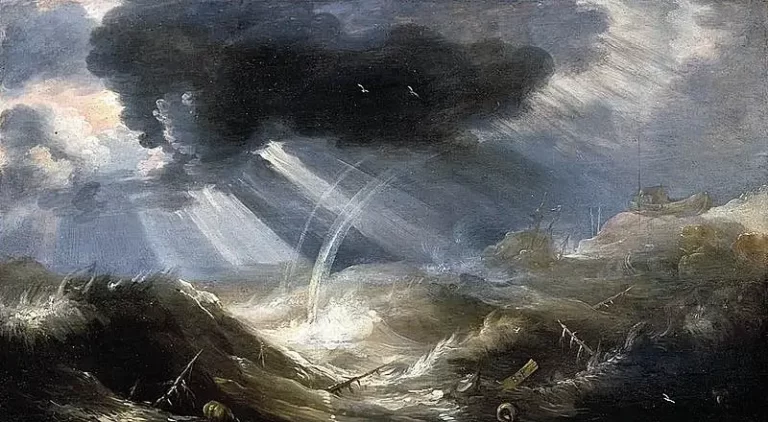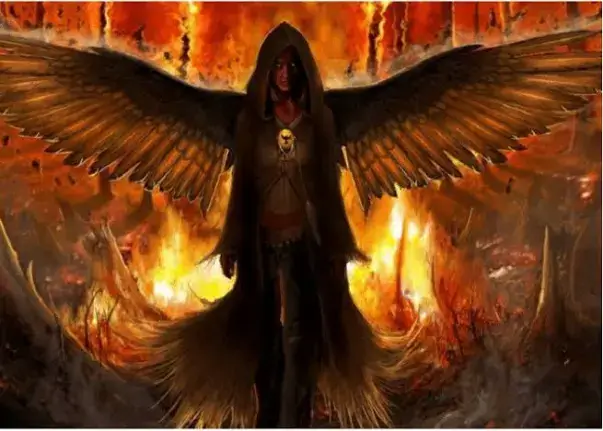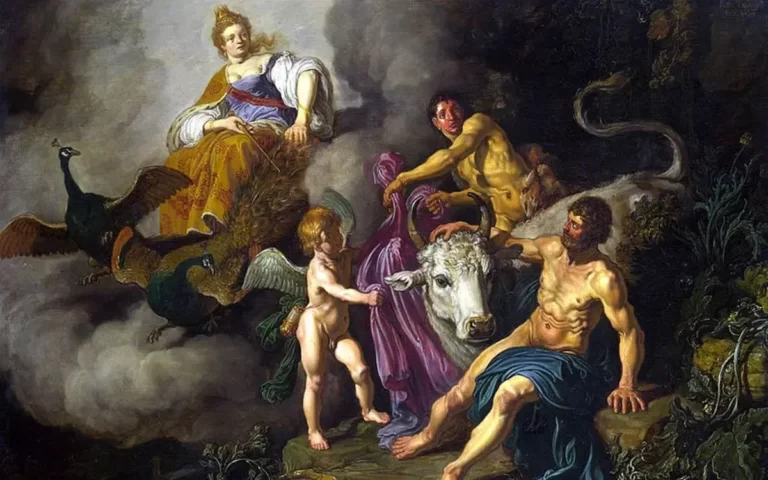Artemis: The Olympian Goddess of the Hunt, Wilderness, and Childbirth
Artemis The Goddess of the Hunt is one of the most widely known Olympian goddesses in Greek mythology, revered for her powers over the hunt, wilderness, and childbirth. As the daughter of Zeus and Leto, Artemis was born as a twin sister to Apollo and played a pivotal role in many of the major myths and legends of ancient Greece.
Introduction to Artemis as an important Olympian Goddess
Artemis was closely associated with the natural world, particularly with animals and the wilderness. Her domain included the forests, mountains, and rivers, and she was often depicted carrying a bow and arrows, ready to hunt game or defend herself against any threats. As a protector of young women, Artemis was also associated with childbirth and fertility, and she was often invoked by women seeking aid during pregnancy and childbirth.
Explanation of the domain and symbolism of Artemis
Throughout Greek mythology, Artemis was a prominent figure in numerous stories and legends. Her most famous feats include aiding the heroes of the Trojan War, defeating the giant hunter Orion, and punishing those who sought to dishonor her or her mother, Leto.
In Greek art and sculpture, Artemis was often depicted as a beautiful young woman dressed in a short tunic and wearing a crescent moon on her forehead. She was frequently accompanied by her sacred animals, including deer, bears, and hounds.
A brief history of Artemis’s mythology and cult
Artemis’s cult was widely celebrated throughout ancient Greece, particularly in regions with strong connections to the wilderness and hunting. Her cult was often characterized by purity and chastity, and she was worshipped as a virgin goddess. Her followers included women seeking aid in childbirth, hunters seeking success in their pursuits, and young maidens seeking protection from harm.
Today, Artemis remains an important symbol of natural strength, femininity, and independence. Her legacy is evident in many aspects of modern culture, including literature, film, and popular art. Her timeless appeal is a testament to her enduring power and influence.
II. H2 Heading: The Mythology of Artemis
Artemis was one of the twelve Olympian gods and goddesses of ancient Greece. She was the daughter of Zeus, king of the gods, and Leto, a titan goddess. As the goddess of the hunt, wilderness, and childbirth, Artemis was associated with the moon and was often depicted carrying a bow and arrows.
The birth and upbringing of Artemis
According to myth, Artemis and her twin brother Apollo were born on the island of Delos, where their mother Leto sought refuge from the wrath of Hera, Zeus’s jealous wife. Artemis was born first, and helped deliver her brother, earning her the title of “goddess of childbirth.” From an early age, Artemis was a skilled hunter and archer and was said to have been raised by the nymphs of the mountains and forests.
The adventures of Artemis
Artemis was known for her fierce independence and her determination to remain a virgin. She was also a protector of young women and was often called upon to defend them from unwanted advances. One of her most famous adventures was the slaying of the giant Orion, who had boasted that he could kill all the animals on the earth. Artemis sent a scorpion to kill Orion, and then placed him in the stars as a constellation.
The relationship between Artemis
Artemis was known to be close to her brother Apollo, and the two of them were often depicted together in art and literature. She was also associated with several other gods and goddesses, including Hecate, the goddess of magic, and Selene, the goddess of the moon. In some myths, she was said to have had romantic relationships with other gods, including Adonis and Orion, but she ultimately remained unmarried and devoted to her role as a protector of young women.
The Symbolism of Artemis
Artemis, the Greek goddess of the hunt, wilderness, and childbirth, was a complex figure with multifaceted symbolism. Here are some of the key symbols associated with her:
- The Hunt and Wilderness: Artemis was primarily associated with the hunt and the natural world. She was often depicted carrying a bow and arrow and accompanied by a pack of hunting dogs. Her ability to move swiftly and silently through the wilderness made her a fearsome and powerful figure.
- The Bow and Arrow: The bow and arrow were two of Artemis’s most important symbols. They represented her hunting prowess and her ability to strike down her enemies with precision and accuracy. In some myths, the bow and arrow were also associated with love and romance, as they were said to be gifts from Eros.
- The Crescent Moon: Artemis was also closely associated with the moon, particularly the crescent moon. In many depictions, she was shown wearing a crescent moon on her forehead, which represented her connection to the lunar cycle and the natural world.
- Virginity and Childbirth: Despite her association with the hunt and wilderness, Artemis was also revered as a protector of childbirth and young women. She was often depicted as a virgin goddess, and her purity and chastity were seen as sources of her power and authority.
- The Natural World: As the goddess of the hunt and wilderness, Artemis was closely connected to the natural world. She was believed to have the power to control animals and the elements and to influence the growth and fertility of plants and crops. Her connection to the natural world made her an important figure in Greek religion and mythology.
The association of Artemis with the hunt and wilderness
Artemis, the Olympian goddess of the hunt, wilderness, and childbirth, is primarily associated with the natural world. She is often depicted as a fierce and skilled huntress, carrying a bow and arrow and accompanied by a pack of loyal hunting dogs. The bow and arrow, which symbolize precision and focus, are essential to Artemis’s identity as a hunter and protector of the wild. The crescent moon, another important symbol associated with Artemis, represents her connection to the night sky and the cyclical nature of life.
The significance of the bow and arrow and the crescent moon
Despite her reputation as a virgin goddess, Artemis is also associated with childbirth and the protection of young children. As the daughter of Leto, who endured difficult and prolonged labor, Artemis became a guardian of expectant mothers and infants. This duality of her nature as both a protector of the wild and a patron of childbirth represents the complex and multifaceted role that Artemis played in ancient Greek society.
The duality of Artemis’s nature as both a virgin and a protector of childbirth
Artemis is also strongly linked to the natural world, particularly the moon. She is often depicted wearing a crescent moon on her forehead and is said to have the ability to control the lunar cycle. Her connection to the natural world and her affinity for the moon makes her a powerful and mystical figure in Greek mythology.
The connection of Artemis with the moon and the natural world
Artemis is closely associated with the moon and the natural world in Greek mythology. She is often depicted with a crescent moon on her forehead, symbolizing her connection with the lunar cycle. This association with the moon is also reflected in her name, which is derived from the ancient Greek word “Artemis,” meaning “healthy, unharmed, pure.”
As the goddess of the wilderness and the hunt, Artemis is also closely connected to the natural world. She is often depicted with a bow and arrow, which she uses to hunt game and protect her sacred spaces. In some myths, she is even said to have the power to control animals and communicate with them, further emphasizing her connection to the natural world.
Artemis’s connection to the moon and the natural world is also reflected in her role as a protector of young women and animals. As a virgin goddess, she is seen as a symbol of purity and chastity, but she also takes on a maternal role as a protector of childbirth and young children. In some myths, she even helps women in labor and ensures the safe delivery of babies.
Overall, Artemis’s association with the moon and the natural world highlights the importance of the natural world in Greek mythology and the ancient Greek worldview. Her dual nature as both a fierce hunter and a protective guardian underscores the complex and multifaceted nature of the natural world and the role of women in Greek society as both powerful and nurturing figures.
The Cult of Artemis
Artemis was one of the most revered Olympian goddesses in ancient Greece, and her cult had a significant influence on Greek society and culture. Here are some aspects related to the cult of Artemis:
- Origins and development: The cult of Artemis has its roots in prehistoric times when she was worshiped as a fertility goddess. Later, her association with the hunt and wilderness led to the development of her cult as a virgin goddess of the hunt. The cult of Artemis developed primarily in the regions of Arcadia, Attica, and Ephesus.
- Rituals and practices: The worship of Artemis involved a variety of rituals and practices, including animal sacrifice, offerings of flowers and incense, and purification ceremonies. The cult of Artemis also involved the observance of festivals, such as the Brauronia, which celebrated the goddess’s role as a protector of young girls.
- Role of women: The cult of Artemis played an important role in the lives of women in ancient Greece. Women were devoted to the goddess as a protector of childbirth and young girls. The priestesses of Artemis, known as the “Bear Maidens,” were responsible for the maintenance of the temple and the performance of the goddess’s rituals.
- Impact on society and culture: The cult of Artemis had a significant impact on Greek society and culture, particularly in the areas of religion, art, and literature. The worship of Artemis inspired the creation of numerous works of art and literature, including the famous Temple of Artemis in Ephesus, one of the Seven Wonders of the Ancient World.
Artemis in Greek Art and Literature
Artemis, as a prominent Olympian goddess, has been a popular subject in Greek art and literature. Her attributes such as the bow and arrow, the crescent moon, and her association with the wilderness and animals have been frequently depicted in various art forms.
The representation of Artemis in Greek art and sculpture
In Greek sculpture, Artemis is often portrayed as a young and athletic figure, dressed in a short tunic and wearing a quiver and a bow. Her hair is usually tied up in a bun or a ponytail, and she is sometimes accompanied by a deer or a hunting dog. One of the most famous representations of Artemis is the statue of Artemis of Ephesus, a multi-breasted figure adorned with jewelry and symbols of fertility.
The portrayal of Artemis in Greek mythology and poetry
In Greek literature and mythology, Artemis is known for her fierce independence and her association with the hunt, wilderness, and childbirth. She is often depicted as a virgin goddess who shuns the company of men and prefers the company of animals and her companions, the nymphs. In several myths, she protects young women during childbirth and punishes those who harm them.
The influence of Artemis on the development of Greek culture and aesthetics
Artemis’s influence on Greek culture and aesthetics can be seen in various art forms, from pottery and sculpture to poetry and drama. Her association with the natural world and her fierce independence have inspired many artists and writers throughout history.
Artemis in Modern Culture
Artemis, the Olympian goddess of the hunt, wilderness, and childbirth, continues to have a strong presence in modern popular culture. She is often portrayed as a strong and independent female character, inspiring women and girls alike. Artemis has appeared in various forms of modern media, including literature, film, and television. In Rick Riordan’s popular book series “Percy Jackson and the Olympians”, Artemis is portrayed as a fierce and independent goddess who leads a group of immortal girls known as the Hunters of Artemis. She also makes an appearance in the popular video game “Assassin’s Creed Odyssey” as a supporting character who guides the protagonist through the game’s story.
In film and television, Artemis has also been a popular character. In the popular TV show “Xena: Warrior Princess”, Artemis is portrayed as a powerful goddess who grants Xena special powers to defeat her enemies. In the 2017 film “Wonder Woman”, the character of Diana Prince/Wonder Woman has seen training with a young girl named Artemis, who is believed to be a nod to the mythological figure.
Moreover, Artemis has also influenced contemporary feminism and environmentalism. Her portrayal as a strong and independent female character has inspired many women to embrace their inner strength and pursue their dreams fearlessly. Additionally, her association with the wilderness and nature has led to her being seen as a symbol of environmentalism, inspiring people to protect the natural world. In conclusion, Artemis remains a beloved and inspiring figure in modern culture, representing strength, independence, and a deep connection to the natural world.
The Legacy of Artemis
Artemis, the Olympian Goddess of the Hunt, Wilderness, and Childbirth, has left a lasting legacy on Greek religion, mythology, and Western culture as a whole. In Greek religion, Artemis was a major goddess who was worshiped in various cities throughout Greece, and her cult continued to thrive even after the spread of Christianity. Artemis also played a significant role in Greek mythology, with many myths and legends featuring her as a central figure.
The impact of Artemis on the cultural and intellectual history of Western civilization is significant, as she has been featured in countless works of art, literature, and film. In literature, she is often depicted as a strong and independent woman, which has had a significant impact on contemporary feminist thought. In addition, Artemis’s connection to nature and the environment has also influenced the development of modern environmentalism.
Artemis’s teachings and values remain relevant in contemporary society, particularly in the areas of feminism and environmentalism. As a goddess of the hunt, she embodies the spirit of independence and self-reliance, which is a key value in contemporary feminist thought. Her connection to nature and the environment also serves as a reminder of the importance of preserving and protecting the natural world. Thus, Artemis’s legacy continues to inspire and influence contemporary society in meaningful ways.
The Controversies Surrounding Artemis
Artemis, as with any figure of great cultural significance, is not without controversies surrounding her mythology and cult. One of the criticisms leveled against Artemis is her association with violence and aggression, particularly in her role as the goddess of the hunt. Her worshipers were often hunters who used their skill in hunting to assert their dominance over the natural world, and this has led to criticism of Artemis as promoting violence against animals. Additionally, some have criticized the Artemis cult for being exclusive and elitist, as it was traditionally limited to women of high status and wealth. However, others see Artemis as a symbol of empowerment and liberation, as she was one of the few Olympian goddesses who remained unmarried and was able to assert her independence and autonomy. This interpretation of Artemis aligns with contemporary feminist values and has contributed to her enduring popularity in modern culture. Overall, while Artemis may be a controversial figure in some respects, her legacy and impact on Greek religion and mythology cannot be denied.
Artemis and the Other Olympian Gods
Artemis, as an Olympian goddess, had various relationships with other gods and goddesses in Greek mythology. She was the twin sister of Apollo, the god of music, prophecy, and healing, the daughter of Zeus, the king of the gods, and Leto, a Titan goddess. Artemis had a close relationship with her brother Apollo, as they were born together and shared some of the same domains, such as archery and the hunt. However, they also had conflicts, such as the story of Apollo killing Niobe’s children and Artemis killing Apollo’s son, Orpheus.
Artemis had alliances with some gods, such as her affiliation with Hestia, the goddess of the hearth, and her cooperation with Aphrodite in helping Adonis. However, she also had conflicts with other gods, such as her rivalry with Hera, Zeus’s wife, and her dispute with Dionysus over his promotion of wild and excessive behavior.
Artemis’s unique position as a goddess of both the natural and the supernatural realms gave her a distinct role among the Olympian gods. She was a protector of the wilderness and the animals that inhabit it, but also had the power to control the moon and the tides. This duality of her nature made her a complex and powerful figure in Greek mythology, and her influence extended beyond just the natural world.
Conclusion: The Enduring Mystery of Artemis
Artemis, the Olympian goddess of the hunt, wilderness, and childbirth, has been an enigmatic figure throughout the ages. Her complex nature, duality, and connection with the natural world have captivated the human imagination and inspired countless works of art, literature, and mythology.
From her origins as a virgin goddess of the wilderness to her association with the moon and childbirth, Artemis has remained a powerful symbol of feminine strength, independence, and empowerment. However, she has also been criticized for her role in promoting violence and exclusivity, highlighting the controversial nature of her cult.
Despite these controversies, the enduring popularity of Artemis in popular culture, literature, and film attests to the lasting impact of her legacy. As a goddess of both the natural and supernatural realms, Artemis occupies a unique position among the Olympian gods, and her influence can be seen in the development of Greek religion and mythology, as well as in the cultural and intellectual history of Western civilization.
Ultimately, the mystery and allure of Artemis continue to fascinate and inspire us, inviting us to explore the complexities of human nature, the natural world, and our potential for strength and empowerment.
